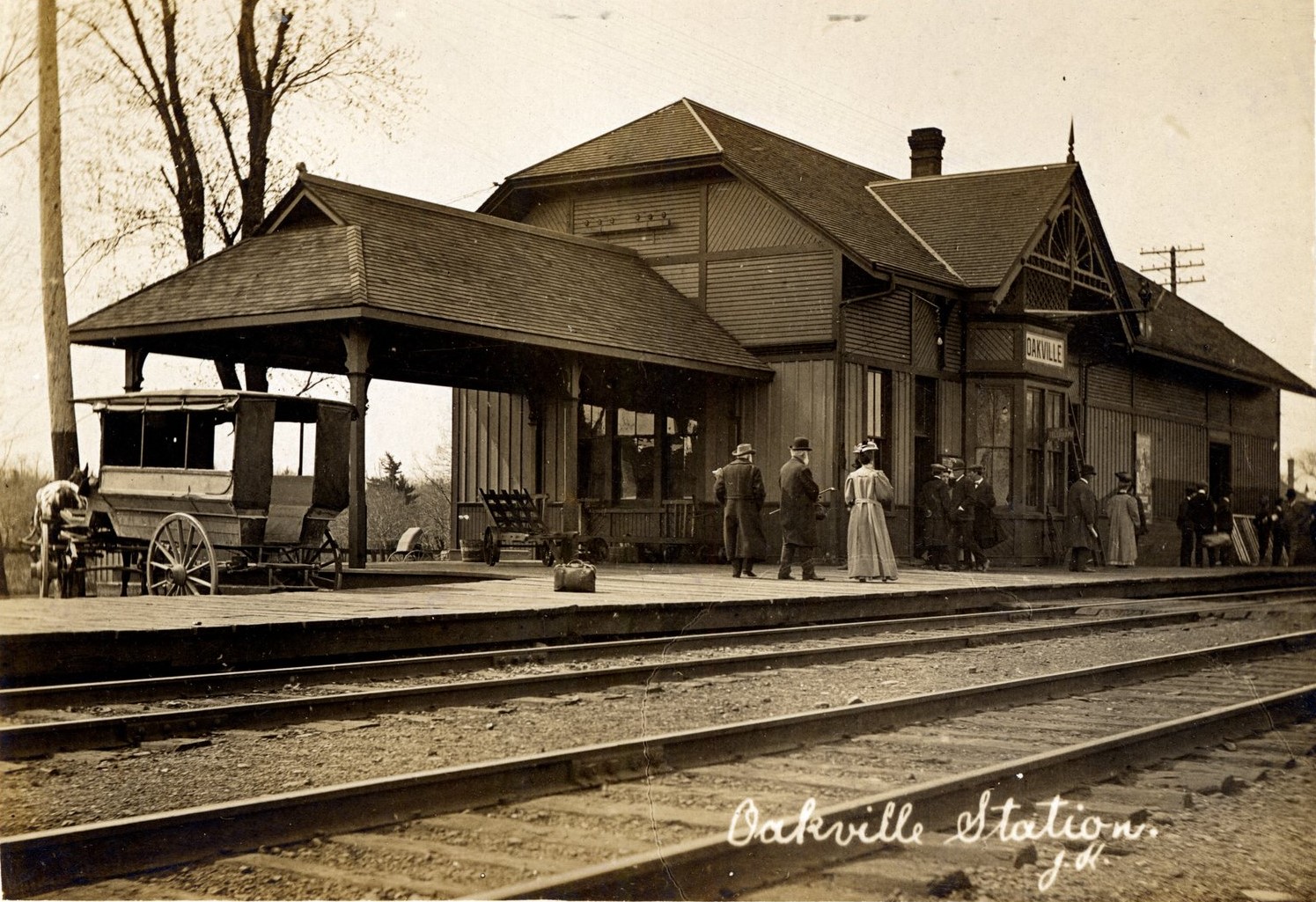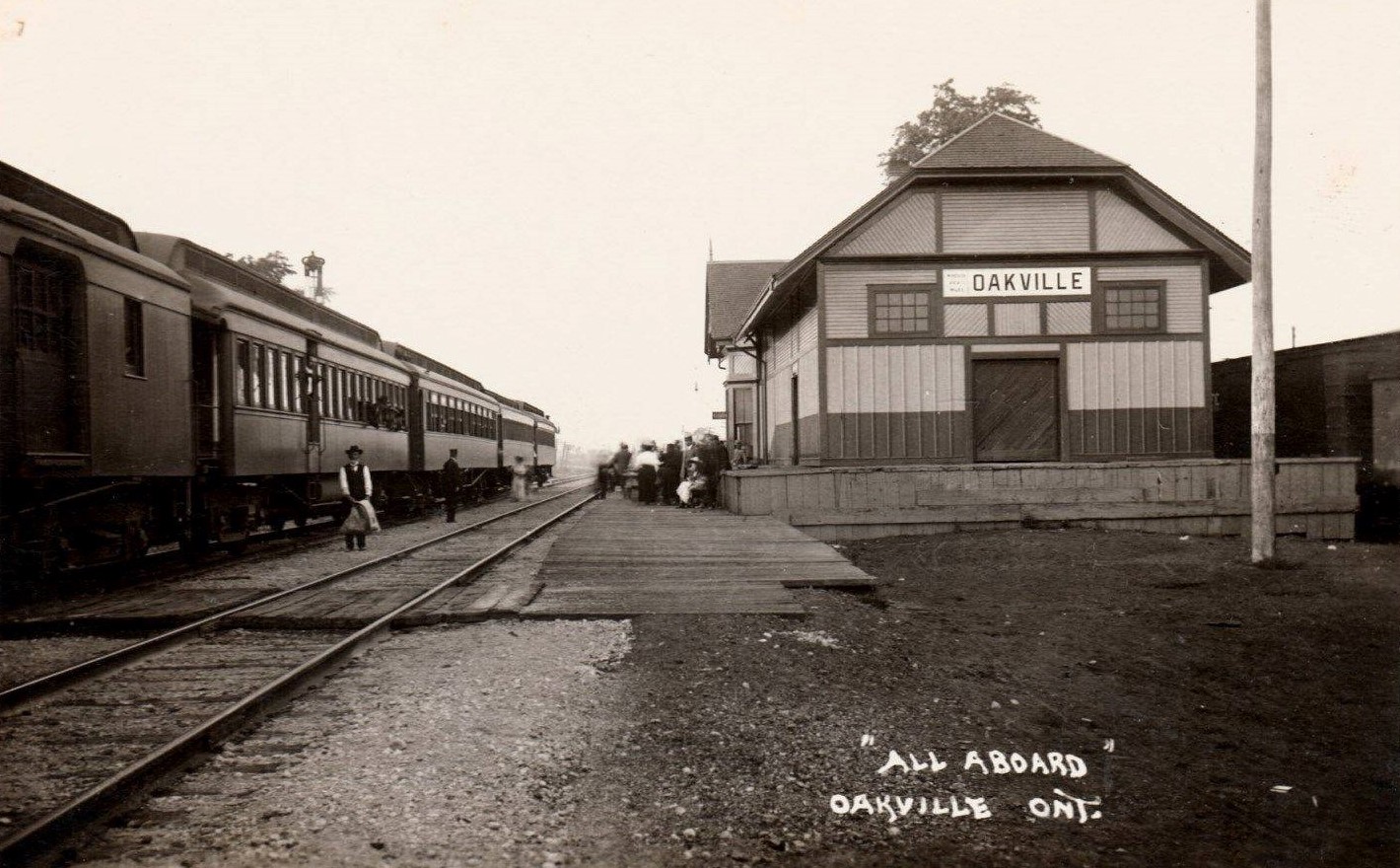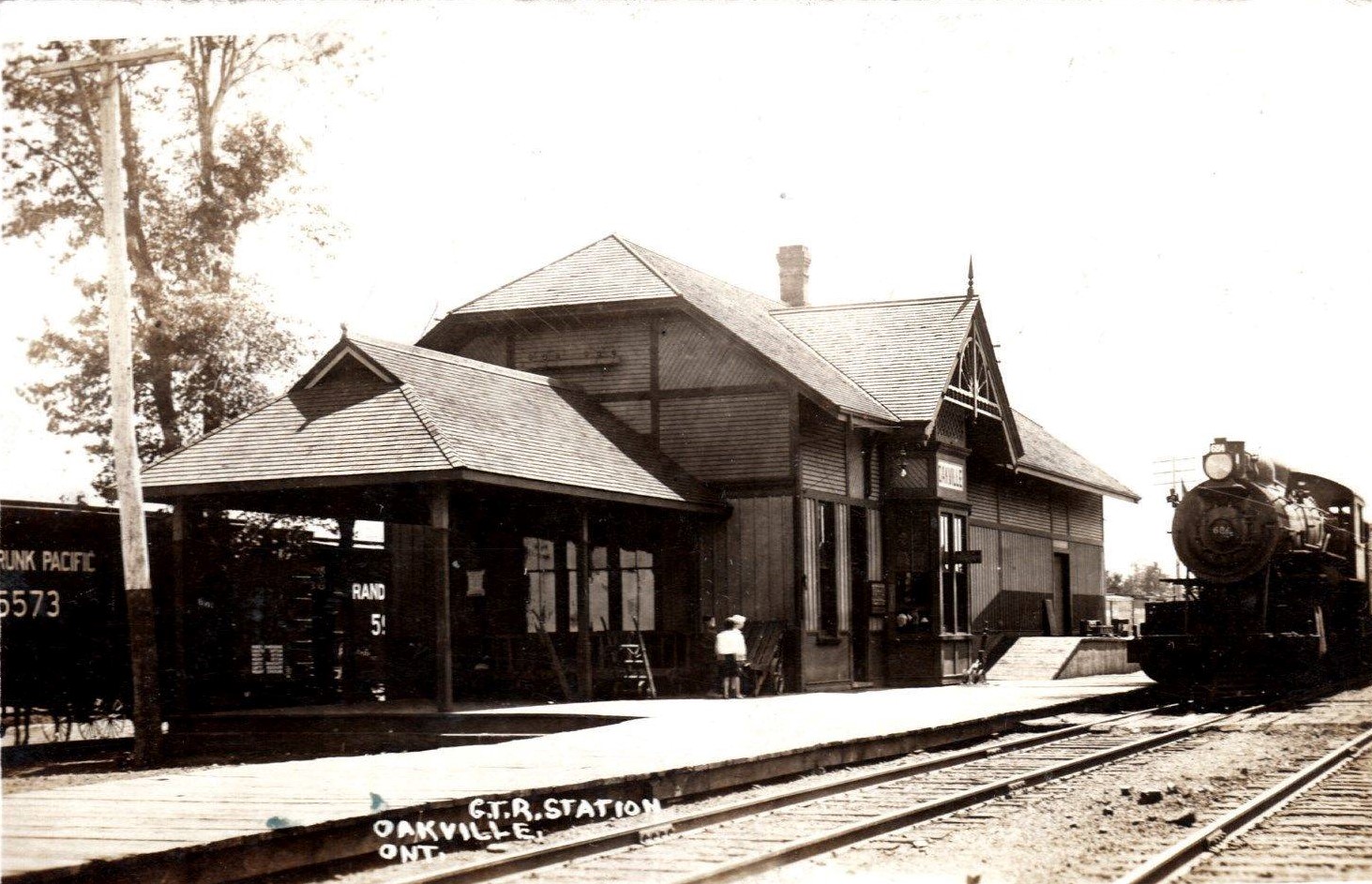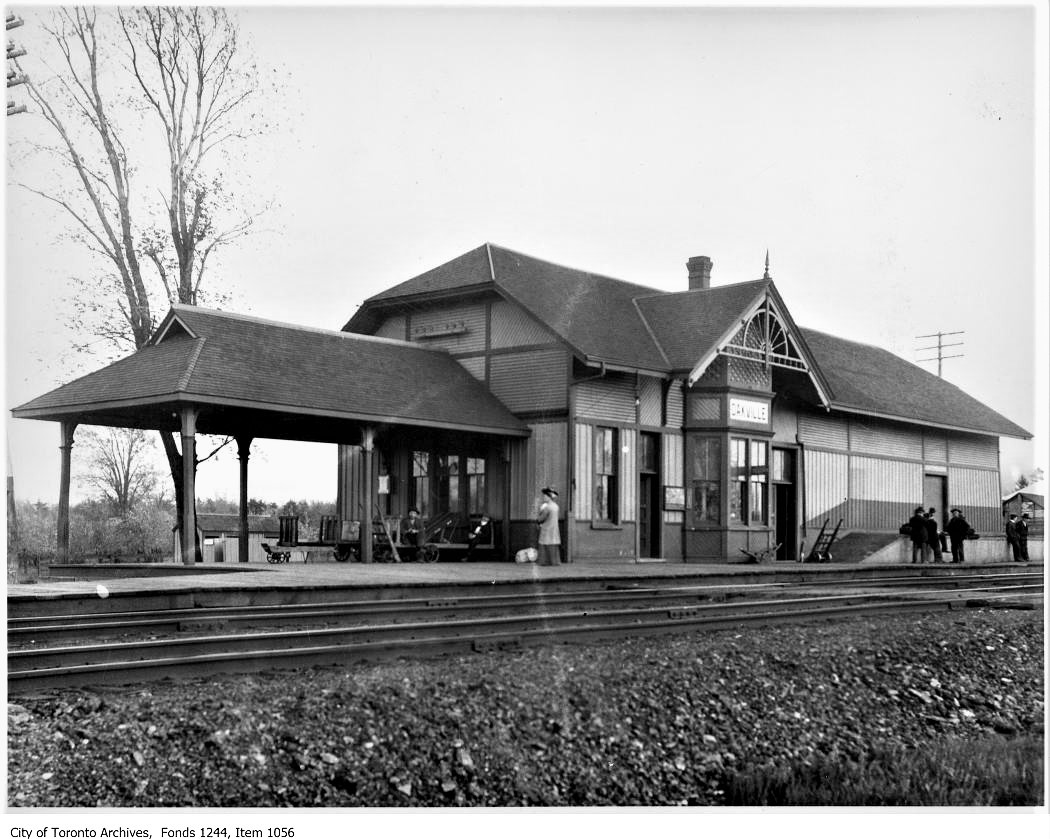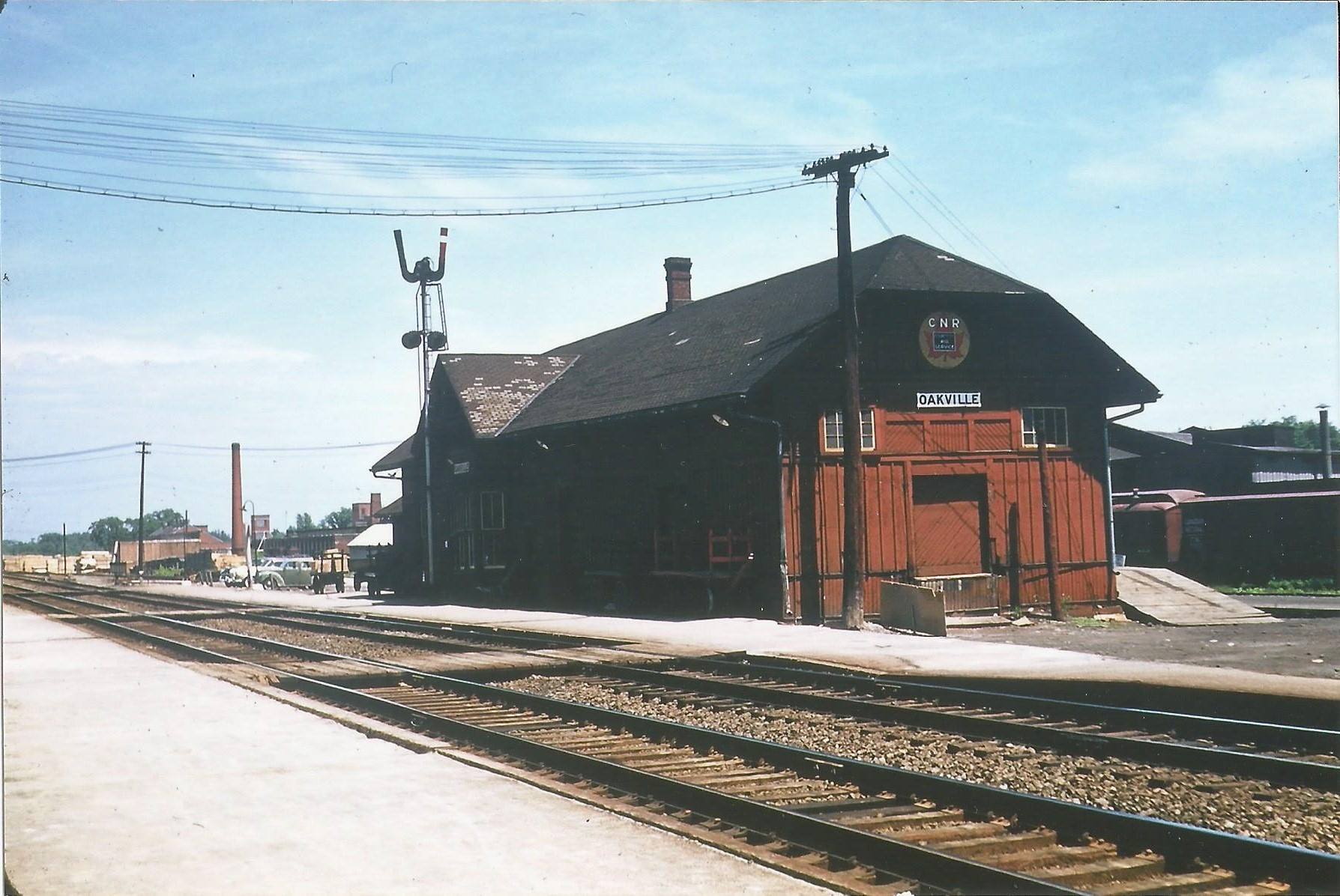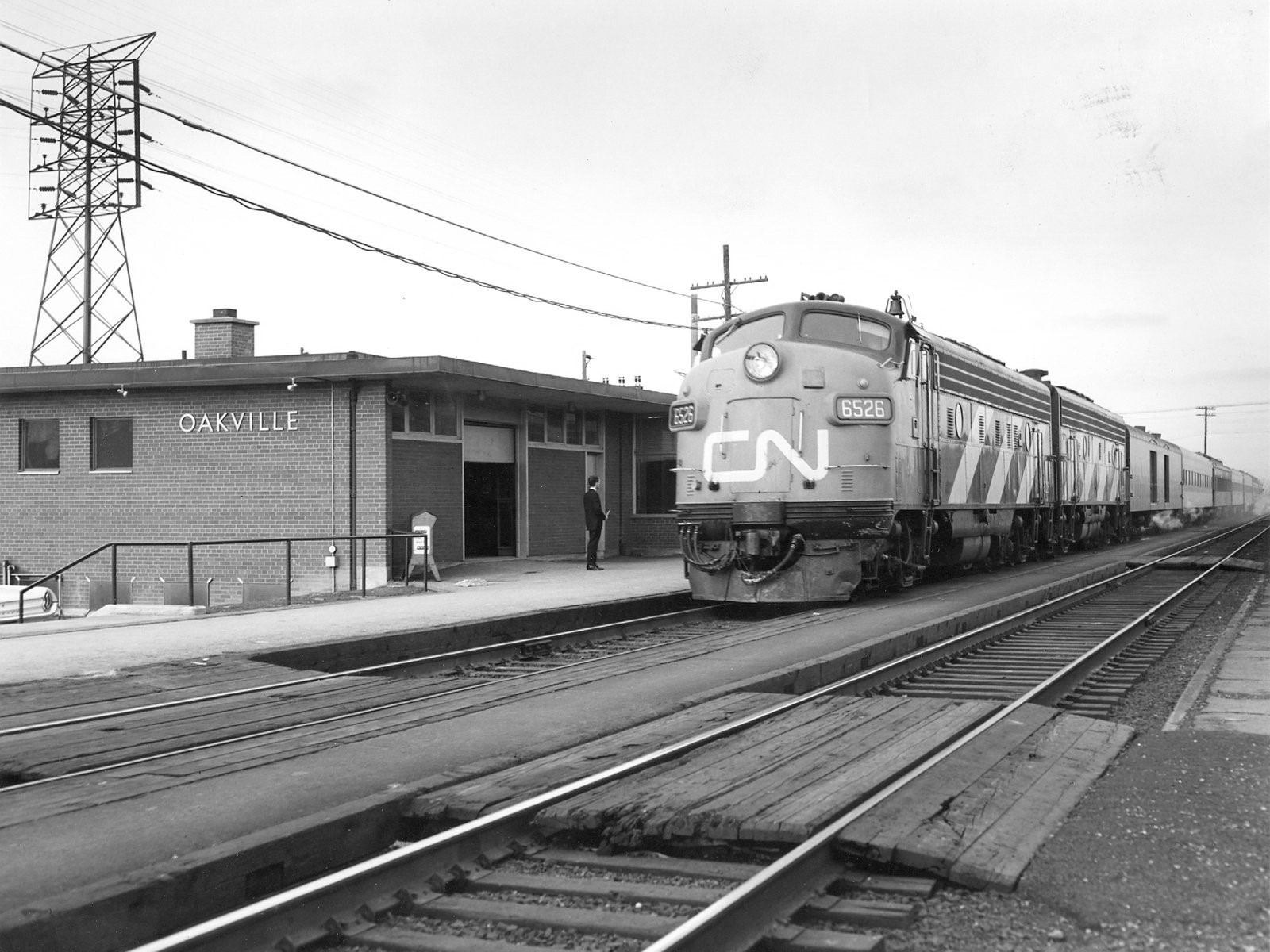Summary
The first railway station in Oakville was built in 1856 by the Great Western Railway while its construction was progressing east towards Toronto. While no photos are known to exist of this station, it was likely a simple wooden structure similar to others built on the Great Western early on in its history. The first train arrived in Oakville later the same year, and by 1861 a total of eight passenger trains stopped in Oakville on a daily basis, increasing to ten by 1867. The population of Oakville had increased to approximately 2000 by 1869; around 500 more than before the railway was completed. The Great Western Railway began double-tracking the segment between Toronto and Hamilton in 1878 to allow for a higher volume of trains, but it would not be completed until many years later in 1896. By this point the line through Oakville was owned and operated by the Grand Trunk Railway, who gained control of the Great Western in 1882. Train service to Oakville had increased even further to 13 trains per day by 1886.
Immediately following the completion of double track through Oakville, a new station was built to replace the aging Great Western-era structure. The new station was a rectangular wooden building with a Jerkinhead roof and a canopy extending from the east side of the building to provide shelter for passengers. A gable was located above the operator’s bay, which provided visibility from the station agent’s office. Soon afterward, the Canadian Pacific Railway would gain trackage rights over the Grand Trunk from Hamilton to Toronto. These trains would use a combination of equipment from Canadian Pacific, Toronto, Hamilton & Buffalo, and the New York Central Railroad, but they were piloted by Canadian Pacific crews over the section between Hamilton and Toronto. Service by Canadian Pacific over this section began on May 30th, 1897, but their trains would initially bypass Oakville altogether. After the financially ailing Grand Trunk was merged into Canadian National in 1923, Canadian Pacific would be allowed to stop at some stations including Oakville. Service would increase to 38 trains per day by 1941, 13 of which belonged to Canadian Pacific.
The popularization of automobiles in the mid to late 20th century resulted in a decline in passenger ridership. This was further affected by the completion of a four-lane divided highway initially called the Middle Road, now known as the Queen Elizabeth Way between Toronto and Hamilton. It ran parallel to the railway approximately half a kilometer north of the station. By the 1950’s a pair of “flag stop signals” were added onto the existing order board mast in front of the station. These lights were activated by passengers to signal to an approaching train that there was someone to pick up. This was an attempt at making passenger service more economical as ridership declined, preventing unnecessary stops for stations that saw fewer passengers over time. Service had reduced to 30 trains per day by 1961, seven of which belonged to Canadian Pacific. The station was demolished during the early 1960’s and subsequently replaced by a flat brick structure. By the 1970’s, the remaining ten Canadian National trains serving Oakville had been upgraded from their conventional consists to either self-propelled Budd Rail Diesel Cars or the new Tempo train sets. Canadian Pacific had similarly switched to Budd RDCs between Toronto and Buffalo, with only one departure at Oakville in each direction by 1974.
Oakville’s status as a bedroom community of Toronto largely kept commuter service intact. GO Transit was formed in 1967 to supplant commuter service between Oakville and Pickering, then expanded further west in subsequent years. Canadian National’s remaining passenger service was spun off as VIA Rail in 1976, and VIA was turned into a separate crown corporation the following year. VIA took over the remaining Canadian Pacific service to Oakville in 1978, and Amtrak began their Maple Leaf service between Toronto and New York in 1981. As passenger ridership began to increase into the 21st century, a third track was built through Oakville and improved facilities were opened between 2009 and 2012.
Condensed Station Info:
| Location: | Served By: | Current State: | Date Built: | Date Demolished: |
| West of Trafalgar Road | GWR (1855 – 1882) GTR (1882 – 1923) CNR (1923 – 1977) GO (1967 – Present) VIA (1977 – Present) Amtrak (1981 – Present) | Demolished | 1854 (First) 1896 (Second) 1960’s (Third) | 1896 (First) 1960’s (Second) 2009 (Third) |


